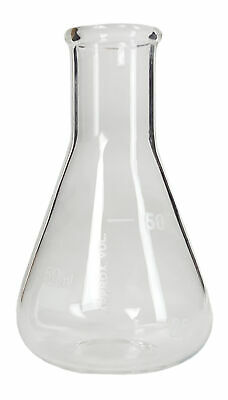-40%
Nalgene PETG Sterile Plain-Bottom Erlenmeyer Flask with Vented Closure
$ 21.11
- Description
- Size Guide
Description
Nalgene PETG Sterile Plain-Bottom Erlenmeyer Flask with Vented Closure2800mL sterile, disposable, clear glycol-modified polyethylene terephthalate (PETG) Erlenmeyer flask with flat base for shaker and suspension cell culture, media preparation, or storage
High-density polyethylene (HDPE) cap has a hydrophobic 0.2µm polytetrafluoroethylene (PTFE) membrane that allows sterile air exchange
Flask provides a five-year shelf life, a 1E-6 sterility assurance level (SAL), and is non-pyrogenic and non-cytotoxic
Measures 273.1mm high, with an outside diameter of 161.5mm at the widest part of the base and an inside diameter of 35.6mm at the neck
Molded-in graduated markings indicate approximate volume measurements
The 2800mL Nalgene 4115-2800 plain-bottom Erlenmeyer flask is made of clear glycol-modified polyethylene terephthalate (PETG), has a high-density polyethylene (HDPE) vented cap with a hydrophobic 0.2µm polytetrafluoroethylene (PTFE) membrane that allows sterile air exchange, and is ideal for shaker and suspension cell culture, media preparation, or storage. Clear PETG reduces the chance of cross-contamination and provides visibility of stored samples. Packaged individually, the flask provides a five-year shelf life and a 1E-6 sterility assurance level (SAL). The flask is disposable, non-pyrogenic, and non-cytotoxic. The flask measures 239.3mm high with cap, and the widest point of the base has an outside diameter of 203.2mm. The inside diameter of the neck is 63.2mm. Molded-in graduated markings indicate the approximate volume. The Erlenmeyer flask is typically used for storing chemicals or samples in a laboratory.
Flasks are glass or plastic containers for storing or collecting chemical samples or solutions in scientific laboratories. They come in a variety of sizes and shapes and are designed for a wide range of scientific processes. Erlenmeyer flasks, introduced by German chemist Emil Erlenmeyer in 1861, are shaped like a cone with a wide, flat base that narrows to a neck opening, which can be closed with a stopper or cap.









